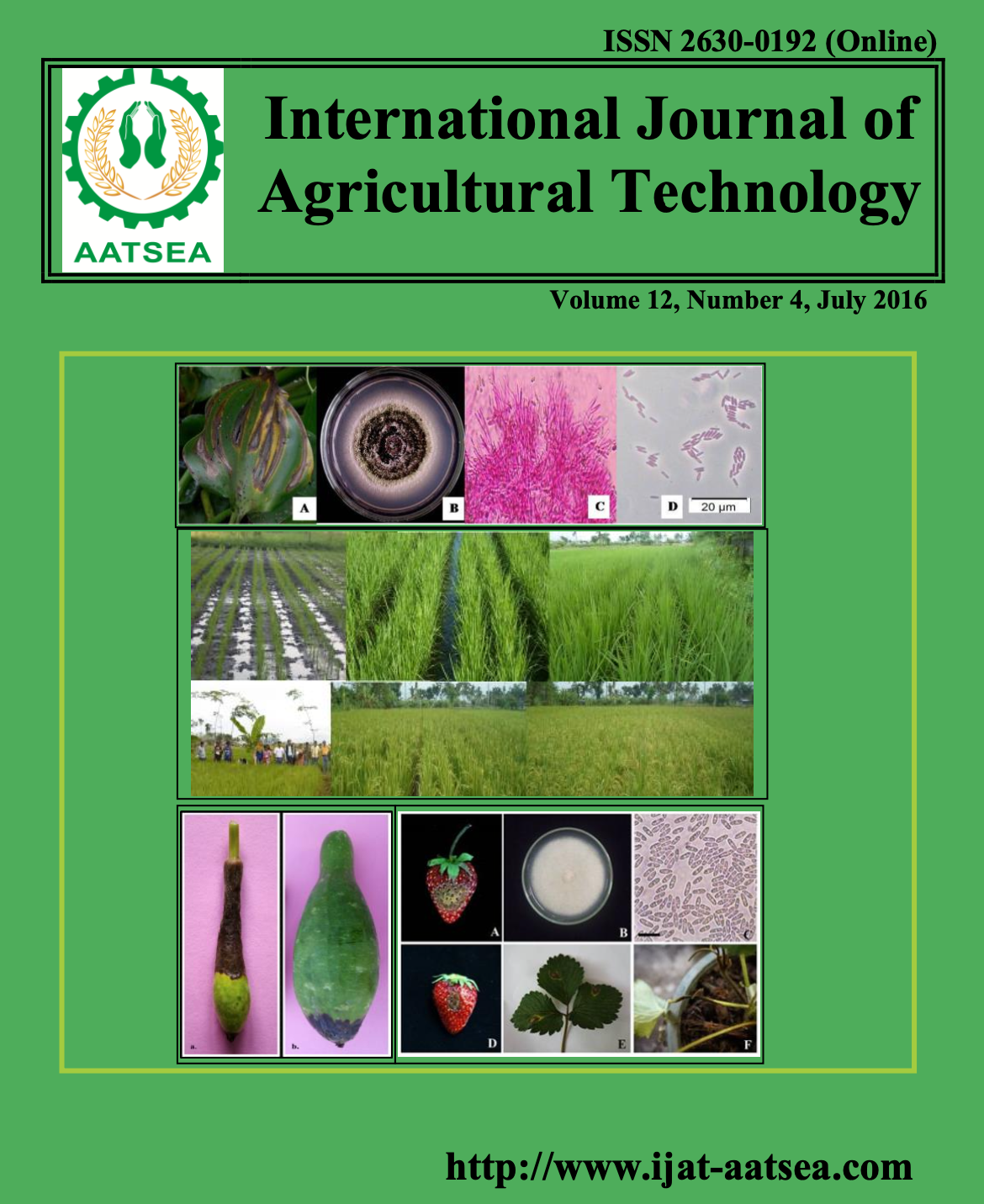Diversity, prevalence and benefits use of trees in the primary and high schools in Thong Song district, Nakhon Si Thammarat province, Thailand
Main Article Content
Abstract
Diversity, prevalence and benefits use of trees in the primary and high schools in Thong Song district, Nakhon Si Thammarat province were studued in Thailand. The field study of trees in each school was conducted from May, 2012 to October, 2012. The process of study were recorded as: taken a photograph of trees, recorded the scientific name, family name, the height of tree, diameter of canopy, recorded the benefit use of tree. The result showed that the diversity and prevalence of trees in 16 schools found 242 species, 45 genera and 22 families. The most abundance families are in LEGUMINOSAE, LYTHIRACEAE and BIGNOICEAE, respectively. The five most abundant are Cerbera odollam Gaertn. (5.34%); Lagerstroemia floribunda Jack (4.52%); Steblus asper Lour. (4.11%); Alstonia schoaris ( L.)R.Br. (3.70%); and Terminalia ivoensis A.Chev. (3.70%), respectively. Tree canopy diameter of total 243 trees was showed that the most trees (44 percent) are in medium size with the canopy diameter 3-4 m, the second number of canopy diameter in small size with the canopy diameter 2.9-1 m are 38 percent and the biggest size of canopy diameter with the canopy diameter 5-6 m are 18 percent.. Tree height of total 248 trees was showing the most highest tree 15 percent with the tree height 15-20 m, the medium tree height 19 percent with the tree height 14-10 m and the abundance of small tree height 32 percent with the tree height 1-9 m. the benefits use of tree in the school from the recorded of total 243 trees, the main benefit use of trees in all schools are propose of shading 78 percent, beneficial use of trees for landscaping and the aesthetics is 22 percent and a little bit about other beneficial use for example for symbol of the fence.
Article Details

This work is licensed under a Creative Commons Attribution-NonCommercial-NoDerivatives 4.0 International License.
References
Burns, R. C. and Hardy, R. W. F. (1975). nitrogen fixation in higher plants. Springerverlag, New York.
Choothong, S., Qin, H. and Soonsawad, N. (2016). Diversity, prevalence and environmental benefits of street tree in Nakhon Si Thammarat, Thailand. Journal of Agricultural Technology 12:395-507.
Evans, H. J. and Barber, L. E. (1977). Biological nitrogen fixation for and fibre. ScienceDirect 197:332 -339.
Fabos, F. G. (2004). Greenway planning in the United State: its origin and recent case studies. Landscape and Urban planning 68:321-342.
Guthrie, G. and Shackleton, C. (2006). Urban-rural contrasts in Arbor Week in South Africa. South African journal of Science 102:14-18.
Ivanko, J. (2001). Planting trees for the future. Environmental Magazine 12:14.
Kummerling, M. and Norbert, M. (2012). The relationship between landscape design style and theconservation value of case study of historical park in Weimar, Germany. Landscape and Urban Planning 107:111-117.
Merry, K., Siry, J., Betting, P. and Bowker, J. M. (2013). Efficient assessments of urban tree planting potential within or near the southern Piemont region of the United States. Computer, Environment and Urban System 39:39-47.
McPherson, E. G. and Rowntree, A. R. (1989). Using structural measures to compare twenty-two U.S. street tree populations. Landscape Journal 8:13-23.
Nagendra, H. and Gopal, D. (2010). Street trees in Bangalore: Density, diversity, composition and distribution. Urban Forestry and Urban Greening 9:129-137.
Nowak, D. J. (1993). Atmospheric carbon reduction by urban trees. Journal of Environmental Management 37:207-217.
Shackletona, C. M., Hebinckb, H., Kaomaa, M., Chishaleshalea, A., Chinyimbaa, S. E., Shackletona, J., Gambizaa, D. and Gumboc, P. (2014). Low-cost housing developments in South Africa miss the opportunities for household level urban greening. Land Use Policy 36:500-509.
Soares, A. L., Rego, E. G., Mcpherson, J. R., Simpson, P. J., Peper, Q. and Xiao, F. C. (2011). Benefits and costs of street trees in Lisbon, Portugal. Urban Forestry and Urban Greening 10:69-78.
Stringer, D. A and Ennos, P. A. R. (2013). The effect of street trees and amentry grass on urban surface water runoff in Manchester, UK.” Urban forestry and Urban Greening 12:282-286.
William, K. (2003). Social preferences for street trees. Treenet proceeding of the 4th National Street tree Symposium,4th and 5th Semtember 2003. University of Melbourne.
Wolch, J. R., Byrne, B. and Newell, J. P. (2014). Urban green space, public health, and environmental justice:The challenge of making cities just green enough. Landscape and Urban Planning 125:234-24.
Zhang, H. and Jim, C. Y. (2014). Species diversity and performance ssessment of trees in domestic gardens. Landscape and Urban Planning 28:23-34.
Zhang, S. and Fuying, L. (2010). Green Streetscape Design Modals Based on Stromwater Management. 2nd Conference on Environmental Science and Information Application Technology.


